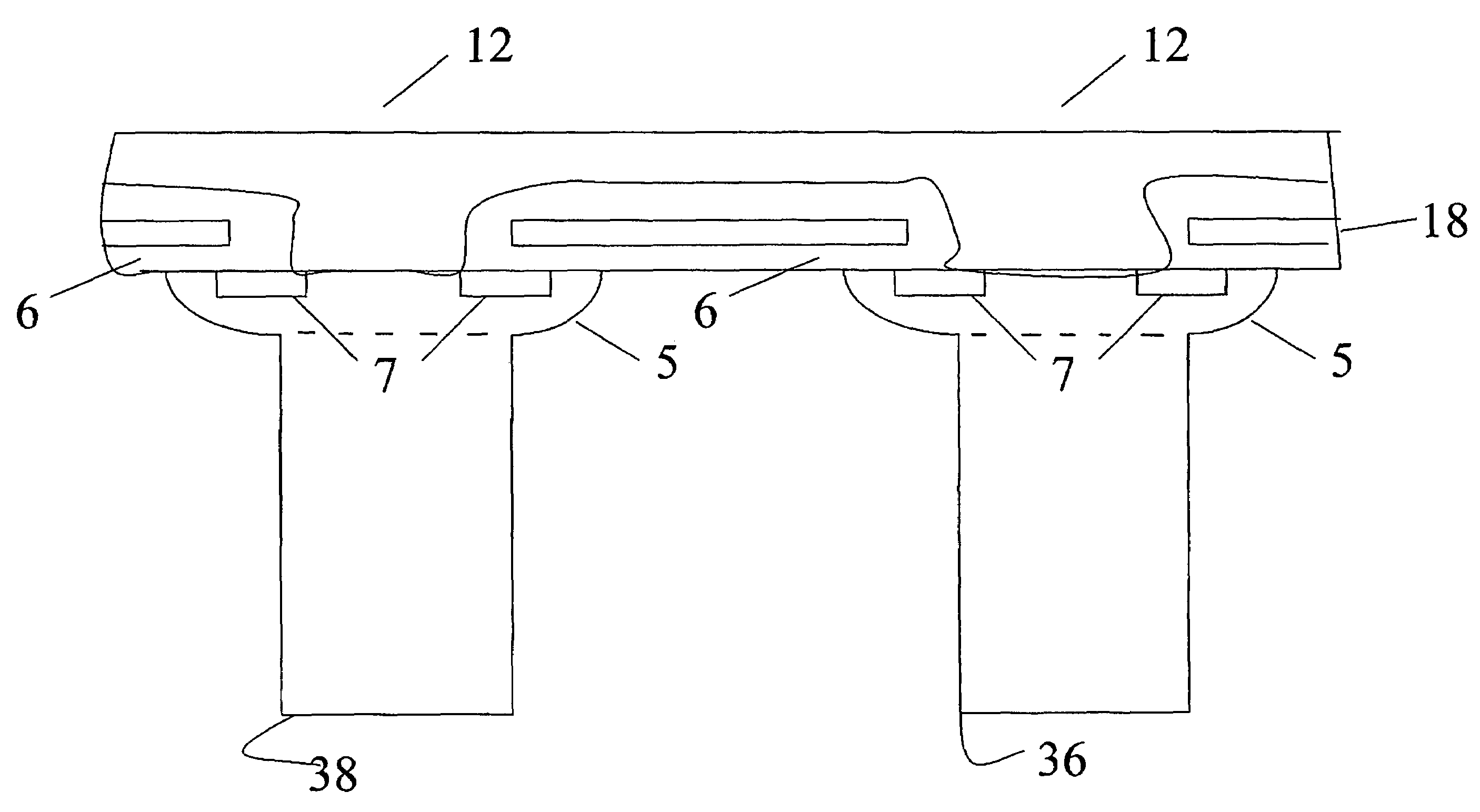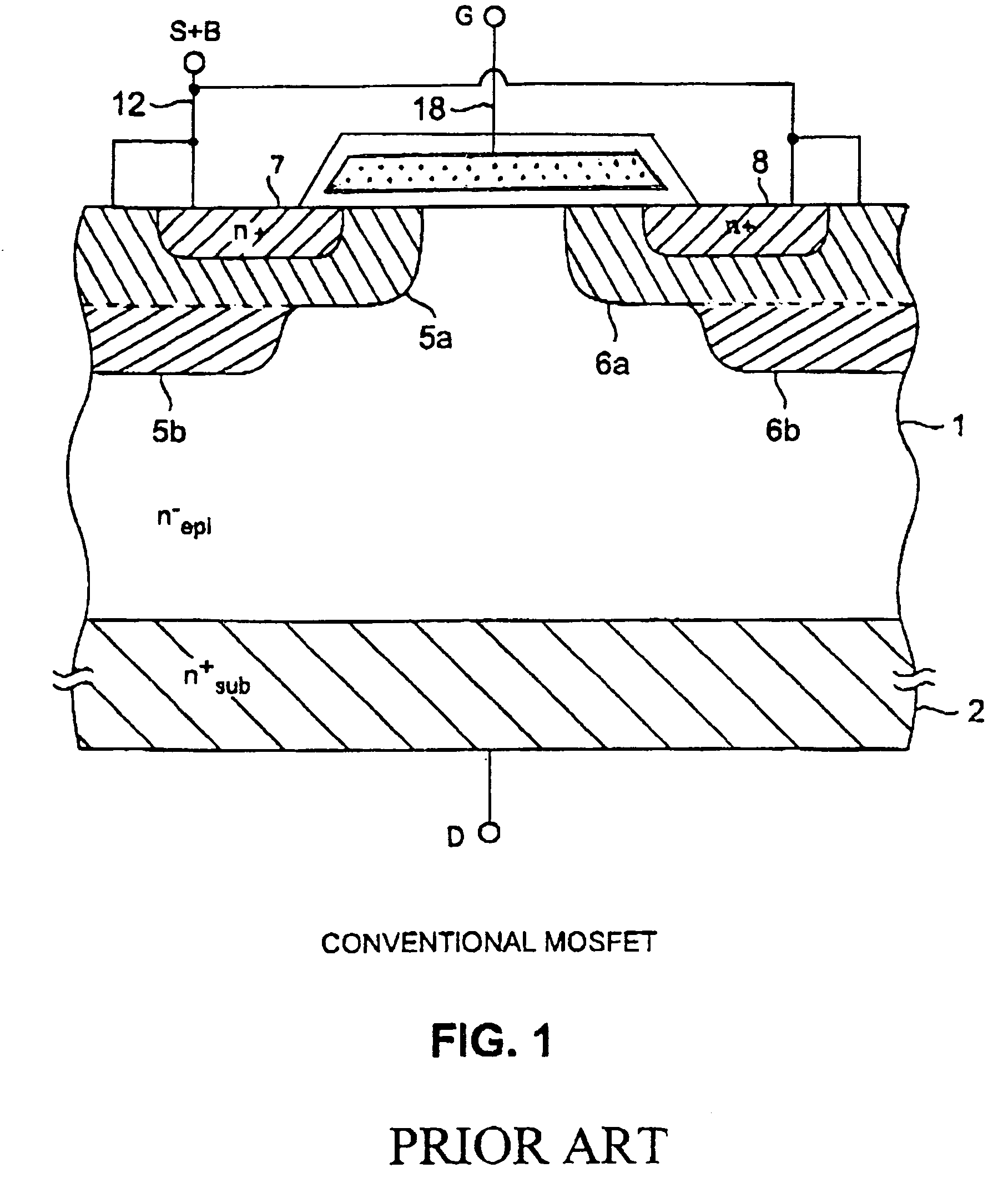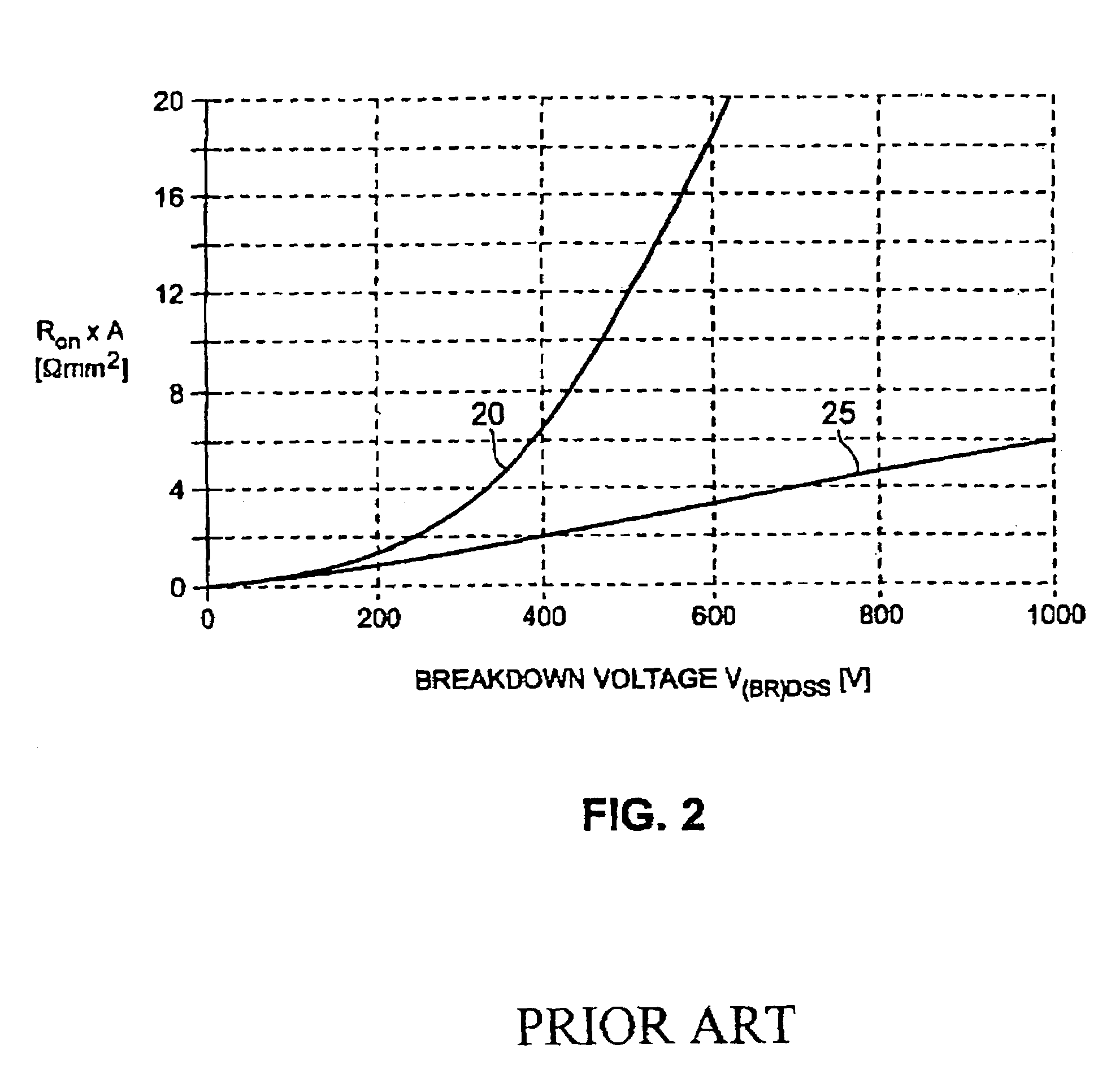Technique for forming the deep doped columns in superjunction
a superjunction and column technology, applied in the field of semiconductor devices, can solve the problems of difficult to avoid non-uniformities in the dopant gradient of columns, rapid increase in resistance of devices, and difficult to resist rapid increase in resistan
- Summary
- Abstract
- Description
- Claims
- Application Information
AI Technical Summary
Problems solved by technology
Method used
Image
Examples
Embodiment Construction
[0027]A technique for forming lightly doped columns that extend almost through a layer of deposited epitaxial semiconductor material is best understood by referring to FIGS. 4–18 while reading the description below. This technique uses trenches etched into the silicon to form lightly doped columns. One type of trenches has a dimension in a first direction that is greater than the dimension in a second direction that is perpendicular to the first direction and is generally rectangular shaped, while a second type is cross-shaped. FIG. 16 shows the top view of a series of generally rectangular shaped trenches 35 following two separate implantation steps that have doped the two narrow walls 31 and 33 of the trenches 35. FIGS. 9 and 10 show the technique that is used to perform the two implantation steps. The two separate implantation steps are performed at an angle with respect to the surface of the substrate that allows the dopant to be implanted into just the two narrow “end” sidewall...
PUM
 Login to View More
Login to View More Abstract
Description
Claims
Application Information
 Login to View More
Login to View More - R&D
- Intellectual Property
- Life Sciences
- Materials
- Tech Scout
- Unparalleled Data Quality
- Higher Quality Content
- 60% Fewer Hallucinations
Browse by: Latest US Patents, China's latest patents, Technical Efficacy Thesaurus, Application Domain, Technology Topic, Popular Technical Reports.
© 2025 PatSnap. All rights reserved.Legal|Privacy policy|Modern Slavery Act Transparency Statement|Sitemap|About US| Contact US: help@patsnap.com



